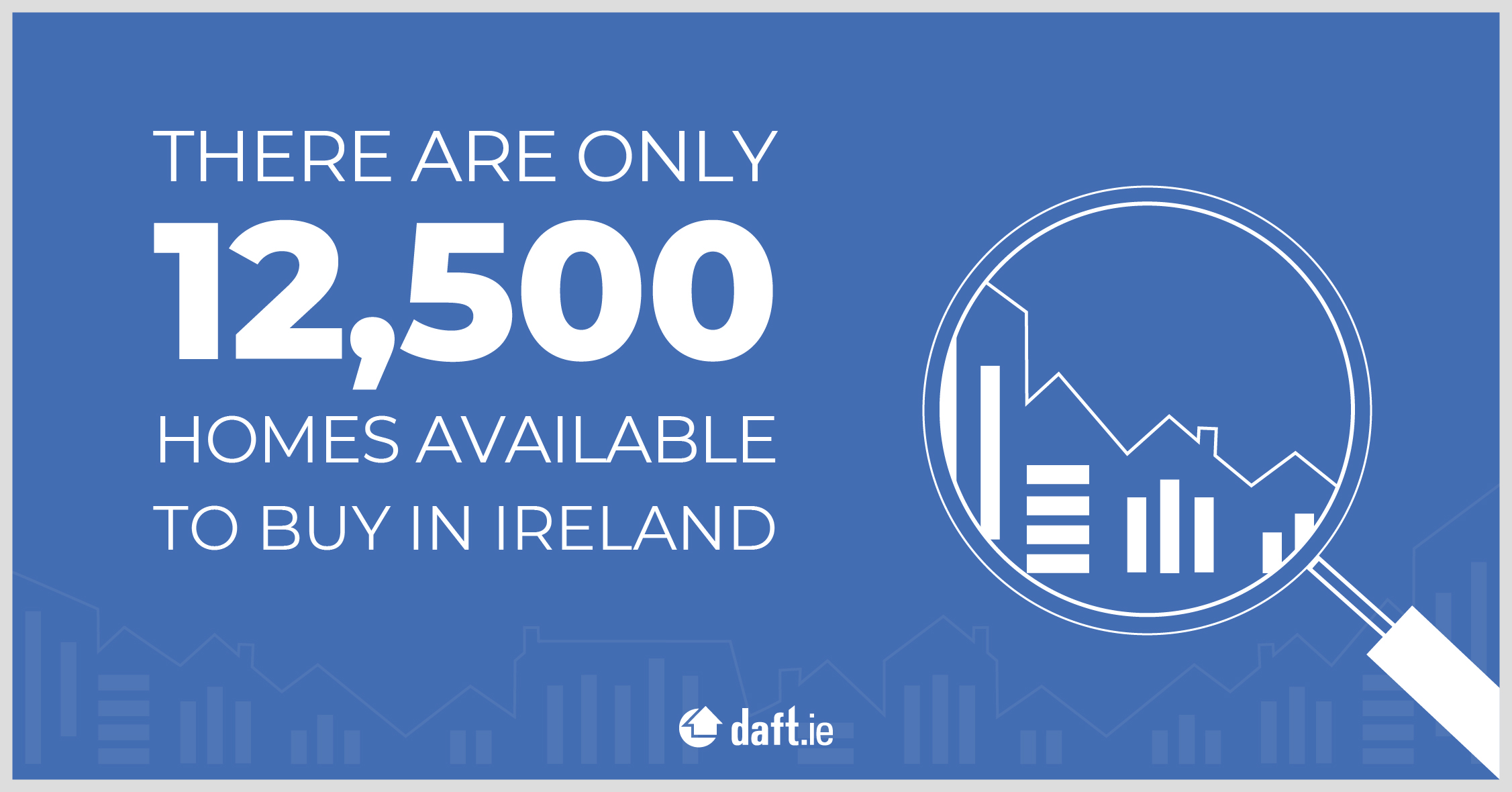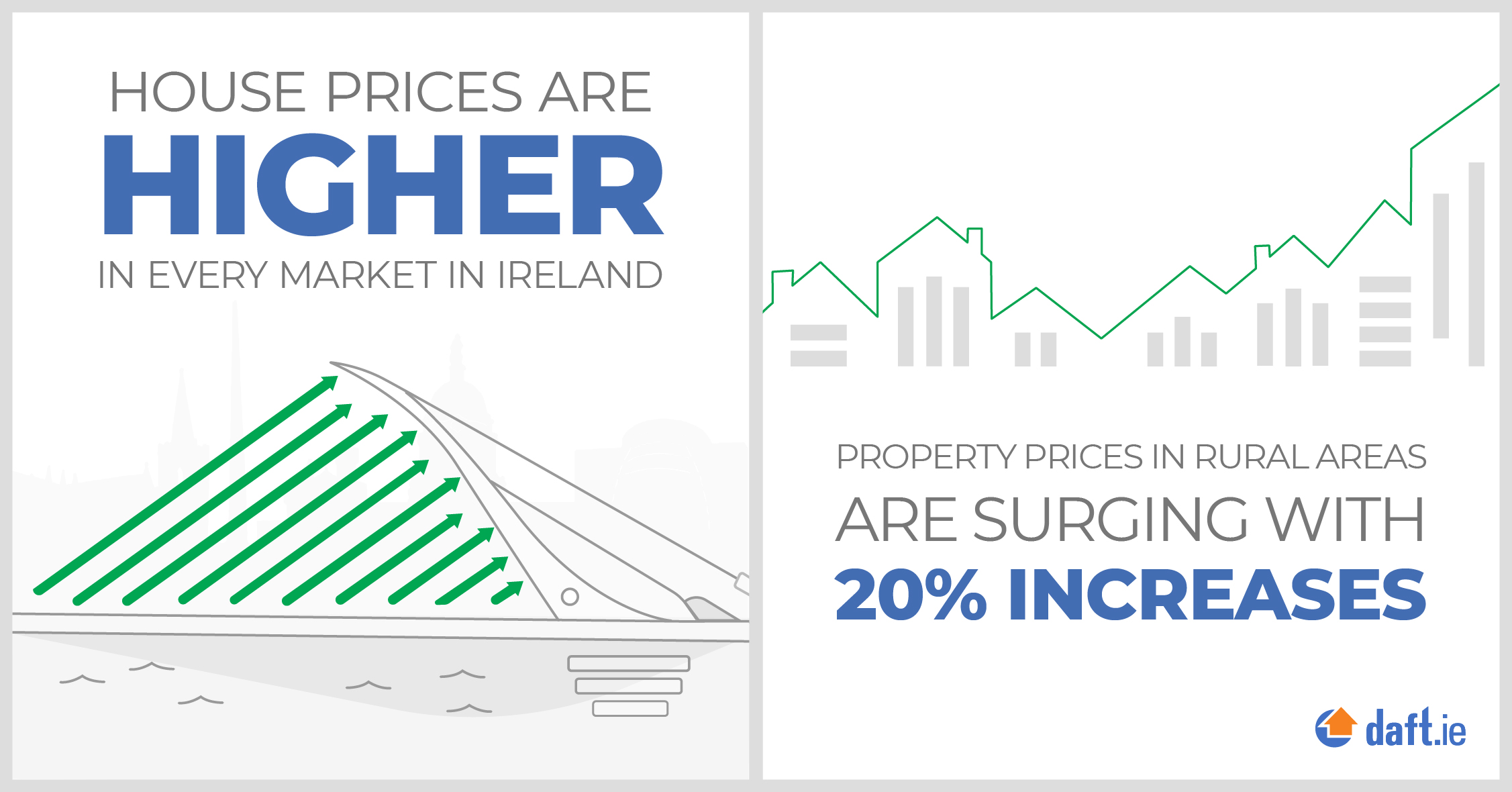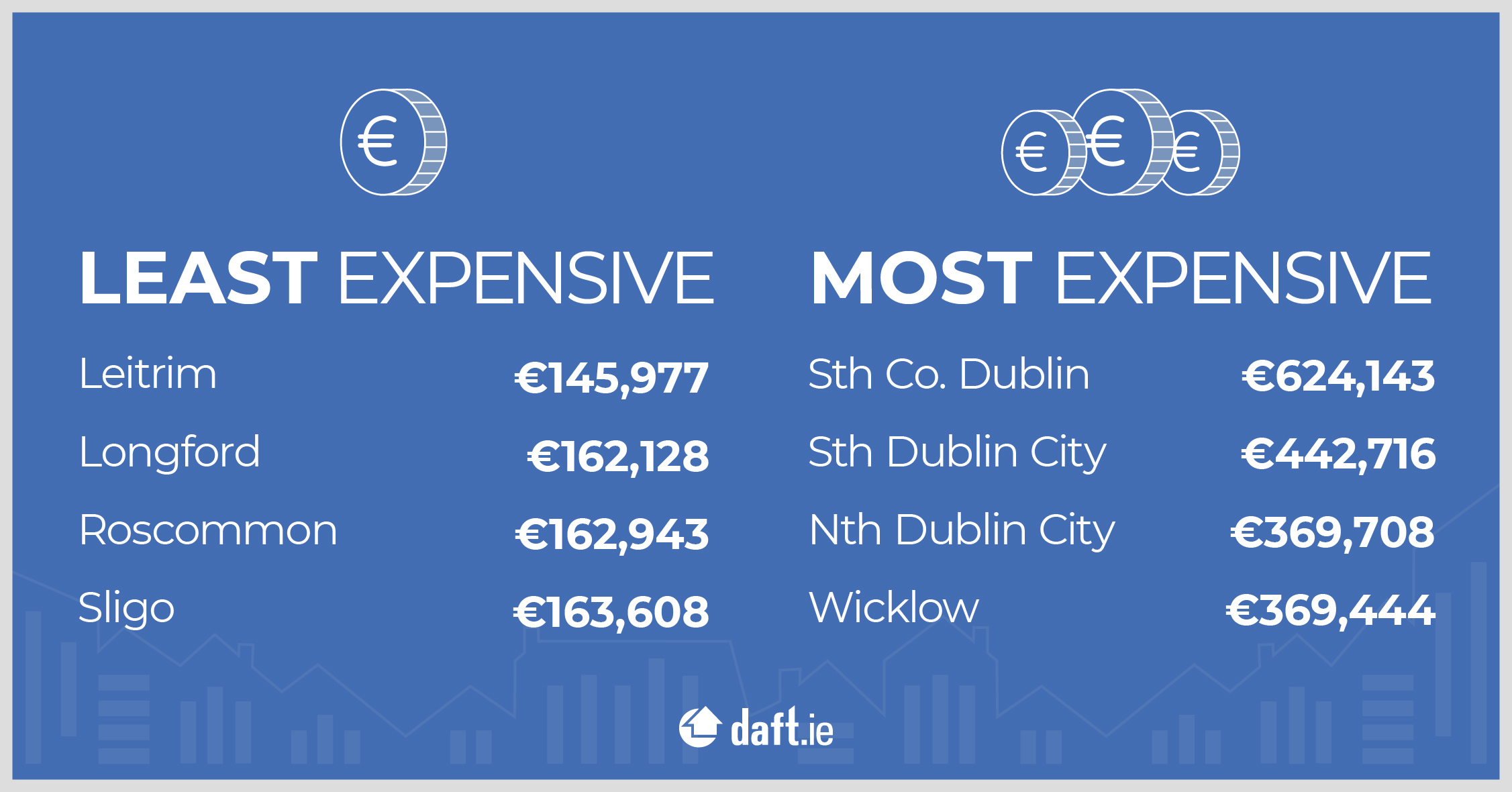Irish House Price Report Q2 2021 | Daft.ie
Daft Reports
- Ronan Lyons (House Price, Q1 2024)
- Ronan Lyons (Rental Price, Q4 2023)
- Ronan Lyons (House Price, Q4 2023)
- Ronan Lyons (Rental Price, Q3 2023)
- Ronan Lyons (House Price, Q3 2023)
- Ronan Lyons (Rental Price, Q2 2023)
- Ronan Lyons (House Price, Q2 2023)
- Ronan Lyons (Rental Price, Q1 2023)
- Ronan Lyons (House Price, Q1 2023)
- Ronan Lyons (Rental Price, Q4 2022)
- Ronan Lyons (House Price, Q4 2022)
- Ronan Lyons (Rental Price, Q3 2022)
- Ronan Lyons (House Price, Q3 2022)
- Ronan Lyons (Rental Price, Q2 2022)
- Ronan Lyons (House Price, Q2 2022)
- Ronan Lyons (Rental Price, Q1 2022)
- Ronan Lyons (House Price, Q1 2022)
- Ronan Lyons (Rental, Q4 2021)
- Ronan Lyons (House Price, Q4 2021)
- Ronan Lyons (Rental, Q3 2021)
- Ronan Lyons (House Price, Q3 2021)
- Ronan Lyons (Rental, Q2 2021)
- Ronan Lyons (House Price, Q2 2021)
- Ronan Lyons (Rental, Q1 2021)
- Ronan Lyons (House Price, Q1 2021)
- Ronan Lyons (Rental, Q4 2020)
- Ronan Lyons (House Price, Q4 2020)
- Ronan Lyons (Wealth, H2 2020)
- Ronan Lyons (Rental, Q3 2020)
- Ronan Lyons (House Price, Q3 2020)
- Ronan Lyons (Housing, July 2020)
- Ronan Lyons (Housing, June 2020)
- Ronan Lyons (Housing, May 2020)
- Ronan Lyons (Rental, Q1 2020)
- Ronan Lyons (House Price, Q1 2020)
- Ronan Lyons (Rental, Q4 2019)
- Ronan Lyons (House Price, Q4 2019)
- Ronan Lyons (Wealth, H2 2019)
- Ronan Lyons (Rental, Q3 2019)
- Ronan Lyons (House Price, Q3 2019)
- Pierre Yimbog (Rental, Q2 2019)
- Ronan Lyons (House Price, Q2 2019)
- Ronan Lyons (Wealth, H1 2019)
- Ronan Lyons (Rental, Q1 2019)
- Ronan Lyons (House Price, Q1 2019)
- Ronan Lyons (Rental, Q4 2018)
- Ronan Lyons (House Price, Q4 2018)
- Ronan Lyons (Wealth, H2 2018)
- Ronan Lyons (Rental, Q3 2018)
- Ronan Lyons (House Price, Q3 2018)
- Shane De Rís (Rental, Q2 2018)
- Ronan Lyons (House Price, Q2 2018)
- Ronan Lyons (Wealth, 2018)
- Ronan Lyons (Rental, Q1 2018)
- Ronan Lyons (House Price, Q1 2018)
- Ronan Lyons (Rental, Q4 2017)
- Ronan Lyons (House Price, Q4 2017)
- Ronan Lyons (Rental, Q3 2017)
- Ronan Lyons (House Price, Q3 2017)
- Katie Ascough (Rental, Q2 2017)
- Ronan Lyons (Wealth, 2017)
- Ronan Lyons (House Price, Q2 2017)
- Ronan Lyons (Rental, Q1 2017)
- Ronan Lyons (House Price, Q1 2017)
- Ronan Lyons (Rental, Q4 2016)
- Ronan Lyons (House Price, Q4 2016)
- Ronan Lyons (Rental, Q3 2016)
- Ronan Lyons (House Price, Q3 2016)
- Ronan Lyons (School Report, 2016)
- Conor Viscardi (Rental, Q2 2016)
- Ronan Lyons (Rail Report, 2016)
- Ronan Lyons (House Price, Q2 2016)
- Ronan Lyons (Rental, Q1 2016)
- Ronan Lyons (House Price, Q1 2016)
- Ronan Lyons (Rental, Q4 2015)
- Ronan Lyons (House Price, Q4 2015)
- Ronan Lyons (Rental, Q3 2015)
- Ronan Lyons (House Price, Q3 2015)
- Marcus O'Halloran (Rental, Q2 2015)
- Ronan Lyons (House Price, Q2 2015)
- Ronan Lyons (Rental, Q1 2015)
- Ronan Lyons (House Price, Q1 2015)
- Ronan Lyons (Rental, Q4 2014)
- Ronan Lyons (House Price, Q4 2014)
- Ronan Lyons (Rental, Q3 2014)
- Ronan Lyons (House Price, Q3 2014)
- Domhnall McGlacken-Byrne (Rental, Q2 2014)
- Ronan Lyons (House Price, Q2 2014)
- Ronan Lyons (Rental, Q1 2014)
- Ronan Lyons (House Price, Q1 2014)
- Ronan Lyons (Rental, Q4 2013)
- Ronan Lyons (House Price, Q4 2013)
- Ronan Lyons (Rental, Q3 2013)
- Ronan Lyons (House Price, Q3 2013)
- Ronan Lyons (Rental, Q2 2013)
- Ronan Lyons (House Price, Q2 2013)
- Ronan Lyons (Rental, Q1 2013)
- Ronan Lyons (House Price, Q1 2013)
- Ronan Lyons (Rental, Q4 2012)
- Ronan Lyons (House Price, Q4 2012)
- Lorcan Sirr (Rental, Q3 2012)
- Padraic Kenna (House Price, Q3 2012)
- John Logue (Rental, Q2 2012)
- Ronan Lyons (House Price, Q2 2012)
- Barry O'Leary (Rental, Q1 2012)
- Seamus Coffey (House Price, Q1 2012)
- Joan Burton (Rental, Q4 2011)
- Ronan Lyons (House Price, Q4 2011)
- Philip O'Sullivan (Rental, Q3 2011)
- Sheila O'Flanagan (House Price, Q3 2011)
- Rachel Breslin (Rental, Q2 2011)
- Constantin Gurdgiev (House Price, Q2 2011)
- Cormac Lucey (Rental, Q1 2011)
- Eoin Fahy (House Price, Q1 2011)
- Lorcan Roche Kelly (Rental, Q4 2010)
- Ronan Lyons (House Price, Q4 2010)
- John Fitzgerald (Rental, Q3 2010)
- Patrick Koucheravy (House Price, Q3 2010)
- Gary Redmond (Rental, Q2 2010)
- Jim Power (House Price, Q2 2010)
- Jill Kerby (Rental, Q1 2010)
- Brian Lucey (House Price, Q1 2010)
- Michael Taft (Rental, Q4 2009)
- Alan McQuaid (House Price, Q4 2009)
- Dr. Charles J. Larkin (Rental, Q3 2009)
- Emer O'Siochru (House Price, Q3 2009)
- Ronan Lyons (Rental, Q2 2009)
- Oliver Gilvarry (House Price, Q2 2009)
- Brian Devine (Rental, Q1 2009)
- Dr. Liam Delaney (House Price, Q1 2009)
- Gerard O'Neill (Rental, Q4 2008)
- Ronan Lyons (House Price, Q4 2008)
- Dr. Stephen Kinsella (Rental, Q3 2008)
- Moore McDowell (House Price, Q3 2008)
- Shane Kelly (Rental, Q2 2008)
- Fergal O'Brien (House Price, Q2 2008)
- Eoin O'Sullivan (Rental, Q1 2008)
- Dermot O'Leary (House Price, Q1 2008)
- Dan O'Brien (Rental, Q4 2007)
- Frances Ruane (House Price, Q4 2007)
- John McCartney (Rental, Q3 2007)
- Ronnie O'Toole (House Price, Q3 2007)
- Ronan Lyons (Rental, Q2 2007)
- Constantin Gurdgiev (House Price, Q2 2007)
- Fintan McNamara (Rental, Q1 2007)
- Rossa White (House Price, Q1 2007)
- Geoff Tucker (Rental, Q4 2006)
- Damien Kiberd (House Price, Q4 2006)
- Pat McArdle (House Price, Q3 2006)
- Marc Coleman (House Price, Q2 2006)
- David Duffy (House Price, Q1 2006)
- Austin Hughes (House Price, Q4 2005)
- David McWilliams (House Price, Q2 2005)

28th Jun 2021
As normality returns, so too must construction
The picture that emerges from this latest Daft.ie House Price Report will be no surprise to anyone looking to buy a home in recent months. Across the country as a whole, the average price rose by 13% ‐ or nearly €33,000 ‐ over the last 12 months. To put this in context, this rate of inflation is higher than the previous peak of nearly 12% in mid-2017 and is only surpassed by late 2014, the surge of demand before Central Bank rules came in, in the 58 quarterly reports compiled by Daft.ie since the start of 2007.
And with prices rising again between March and June, Ireland recorded four consecutive quarters of gains in listed prices ‐ from 2020Q3 to 2021Q2 ‐ for the first time since 2014.
The reason for these trends is obvious, if counter-intuitive to someone who had not lived through the first year of the Covid-19 pandemic and its associated restrictions on economic activity. Housing supply ground to a halt, while housing demand ‐ especially in the first-time buyer cohort ‐ expanded rather than contracted.

Demand expanded because of the very peculiar nature of this economic crisis, compared to others. While some sectors were almost obliterated overnight, and survived only with government support and forbearance from lenders, large parts of the economy ‐ especially those on higher incomes ‐ were unaffected other than a reorganization of how work got done. And with far fewer outlets for consumer expenditure, housing became a sink for savings.
Supply ground to a halt for two reasons. Firstly, and arguably the lesser of the two factors at least for now, construction was halted. Due to the nature of the work, it fell victim to public health measures. However, the overall impact on the number of homes built has been modest, comparing for example homes built in 2020 (nearly 20,700) with the number built in 2019 (just over 21,000).
So while construction remains woefully inadequate compared to the true level of housing need in Ireland ‐ likely as high as 50,000 new homes across all tenures and types ‐ it can't explain the spike in prices over the last year. Instead, it is the second-hand market that is driving the fall-off in supply. Between 2015 and 2019, the typical month in Ireland saw just under 5,000 homes listed for sale, the vast majority of those second-hand.
The figure accompanying this piece shows the number of homes listed for sale, by month, each year since 2015. The typical year has two peaks in listings ‐ one in May, when about 6,500 homes are put up for sale, and the other in September when 6,100 come on to the market. January, November and in particular December are the quietest months, with just 2,400 homes on the market in December.
The first lockdown in 2020 is clearly visible in the Figure. From the second half of March until early June, very little was happening in Ireland's sale market, but by July, things had rebounded and there was a normality of sorts for the rest of the year.

Since the start of 2021, however, listings have been extraordinarily weak, as the country grappled with the early-2021 wave of Covid-19. When things were at their worst, in January and February, the number of homes coming on to the market was more than one third lower than the 2015-2019 average. But as those are two of the quieter months of the year, the loss was both smaller and more easily reversed, if subsequent activity was at a higher level.
Instead, these trends continued into the middle of the year. Each of March, April and May were quieter than any of their counterparts in the period 2015-2019. Overall, across the first five months of 2021, just over 20,000 homes were listed for sale. This is 22% lower than the average for 2015-2019. That is almost 5,600 homes that ordinarily would have come onto the market but didn't. With the budgets of first-time buyers up, and supply down by so much, it is hardly any wonder that prices have jumped as much as they have.
It's understandable that would-be homebuyers ‐ some living, and working, in less-than-ideal circumstances for over a year now ‐ feel angry about their predicament. When will respite come for those looking to buy a home? The answer, as it almost invariably has been for nearly three decades in Ireland's housing market now, depends on supply.

It is reasonable to expect that, once people have enjoyed the relaxing of restrictions and summer staycations are done, that some of the backlog of second-hand homes will come on to the market. We don't know yet what day-to-day life will look like in October or November, but compared to recent months, it's likely to feel a lot more normal. This makes viewing a home easier and thus putting your own home on the market less risky. If the second half of the year saw a bumper crop of homes put up on the market, we could well see prices ease back a bit from their current levels, especially as household income finds other outlets again.
Indeed, if that were to pass, and offices made something of a comeback, there could be a quick reversal of prices in some areas. However, more likely is that the volume of listings will gradually return to pre-Covid levels as the year progresses. This should be enough to take the sting out of the market but perhaps not enough to bring rapid price reversals.
Beyond 2021, however, we cannot rely on recycling the same stock of housing as our population grows and as our household size shrinks. The country desperately needs tens of thousands of new homes a year ‐ and for decades. Rather than cap the construction of new homes, as the government's new Housing Need & Demand Assessment tool seeks to do, policy must do an about-face and look to boost the building of homes where they are needed.
